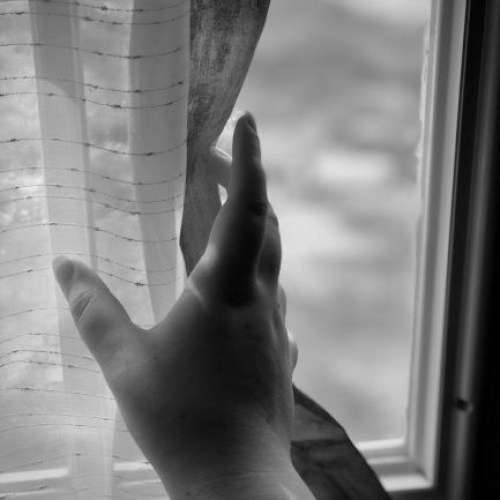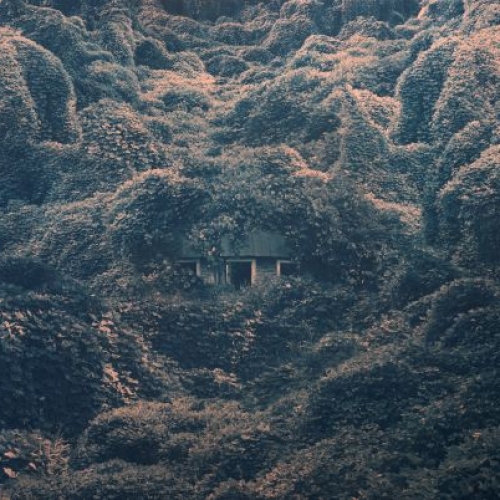ARCHIVE Imaging Arts: Academic Program
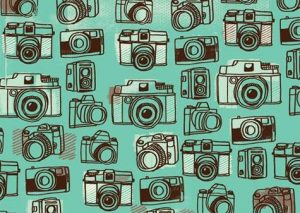 Undergraduate students can earn the Bachelor of Art (BA) degree in Art or the Bachelor of Fine Arts (BFA) degree in Art with an emphasis in imaging arts. There is not an imaging arts emphasis for the Master of Fine Arts (MFA) degree.
Undergraduate students can earn the Bachelor of Art (BA) degree in Art or the Bachelor of Fine Arts (BFA) degree in Art with an emphasis in imaging arts. There is not an imaging arts emphasis for the Master of Fine Arts (MFA) degree.
The BA degree has a deeper and wider general education foundation than the BFA degree. The BA degree provides flexibility for combining the study of art with a different field of study as a required minor. BA students can use their art electives to focus on the studio area of their choice, such as imaging arts. Students can choose to enter the BFA Studio Art program during the regular UM admissions process. After completing the foundation core and having a minimum cumulative GPA of 2.0 and 2.5 GPA in all art and art history courses, BFA students participate in the BFA Foundations Review to stay in the BFA degree. BFA students then gain wider training across the studio areas, gain depth in their area of emphasis, build a professional portfolio, and hold a final thesis show.
Personal Computer/Equipment Requirement
A laptop is highly recommended for all imaging arts classes above Art 381. It is used in the creation of photographic imagery, the production of video and hybrid forms of photographic practices today. We recommend a Mac laptop but there are many options available today that will satisfy the needs of the Imaging Arts curriculum.
Laptop suggestions
- The minimum amount of RAM for most creative software is 8 GB.
- 15-inch MacBook Pro with Touch Bar and Touch ID
- 8GHz quad-core Intel Core i7 processor, Turbo Boost up to 3.8GHz
- 16GB 2133MHz memory
- 512GB PCIe-based SSD
- Radeon Pro 555 with 2GB memory
- AppleCare Protection Plan
- Belkin USB-C to Gigabit Ethernet Adapter
Creative Cloud subscription for Photographers
Camera requirements
- Art 381 requires a 35mm SLR camera with a 50 mm lens
- Art 383 requires a digital camera with manual controls
Educational Partners
Our industry sponsors – Tamron and Sony – provides free access for our students to the newest lenses and cameras. This is something that I was able to establish for the 2019-20 academic year and will continue for 2020-21 due to COVID.
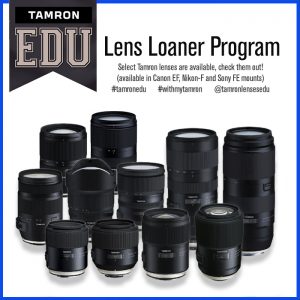
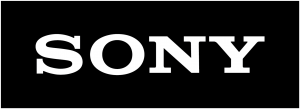
Imaging Arts Courses
Students explore a variety of image-making processes through coursework in black and white, color, large format, studio lighting, non-silver, digital photography, and video. We have provided a few featured courses to provide more detail and samples of student work.
Here are all imaging arts courses.
Art 201. Digital Imaging. Introduction to the visual language of digital art production using vector and raster-based software; taught using Adobe Creative Cloud.
Art 381. Beginning Imaging Arts. Photographic fundamentals and camera techniques applied to basic black-and-white photography; emphasizes development of a personal point of view.
Art 383. Intermediate Imaging Arts. Photographic fundamentals in digital imaging, including capture, edit, output, and studio lighting as they relate to color photography; emphasizes developing technical skill and creative problem solving.
Art 384. Digital Video I. Technical and conceptual foundation of time-based media; includes single camera production, storyboard production, lighting and post-production editing.
Art 385. Intro Alternative Photographic Processes. Alternative photographic processes explore image making through various lens-based practices; emphasizes the history of photographic print materials in combination with digital strategies using cyanotype, Van Dyke brown, gum bichromate and palladium emulsions. Students must have a digital or 35 mm film camera.
Art 483. Advanced Intermediate Imaging Arts. Focuses on advanced problems in studio techniques and concept development related to digital, film, and hybrid forms of photography; emphasizes individual expression, research, and professional practices.
Art 484. Advanced Digital Video. Advanced problems in studio techniques and conceptual development related to digital video; emphasis on individual expression and research.
Art 485. Advanced Alt Photographic Processes. Advanced image making through various lens-based practices; emphasizes the history of photographic print materials in combination with digital strategies. Students must have a digital or 35 mm film camera.
Art 581. Black-And-White Photography. Advanced black-and-white photography with emphasis on the mechanics of 35 mm camera skills, darkroom techniques, and developing a personal photographic style; focus on a fine art approach to image making.
Art 583. Digital Photography. Acquisition of the technical language of the digital image by advanced art students and development of a personal photographic style; emphasis is a fine art approach to digital image making.
Art 584. Digital Video. Technical and conceptual foundation of time-based media for advanced art students; includes single camera production, storyboard production, lighting and post production editing.
Art 585. Alternative Photographic Processes. Alternative photographic processes, which explore image making through various lens-based practices; emphasizes on the history of photographic print materials in combination with digital strategies using cyanotype, Vandyke brown, gum bichromate and palladium emulsions. Students must have a digital or 35 mm film camera.
Art 683. Digital Photography. Fine art approach to digital image making; development of a personal photographic style and learn about theoretical, conceptual and contemporary issues surrounding digital photography.
